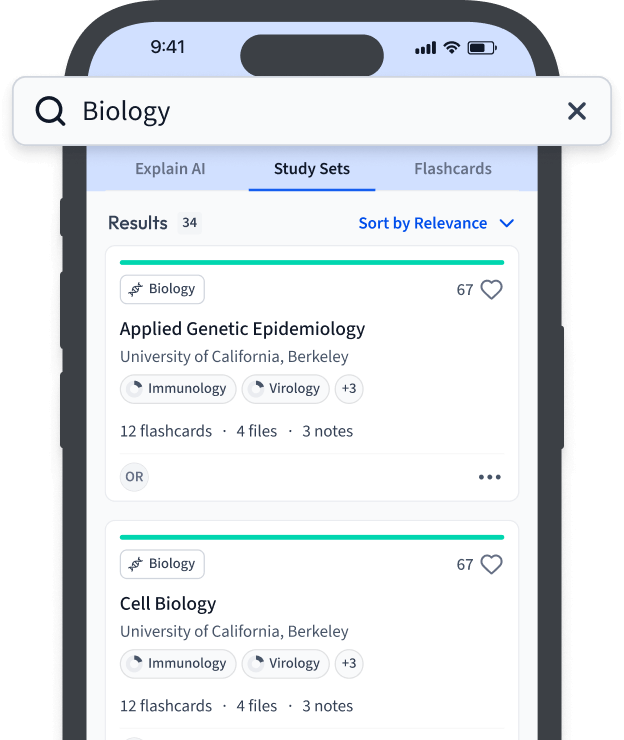Danke für Ihr Interesse an den Lernpräferenzen!
Danke für dein Interesse an verschiedenen Lernmethoden! Welche Methode bevorzugst du? (z. B. „Audio“, „Video“, „Text“, „Keine Präferenz“) (optional)
Feedback sendenTeigtemperatur Definition
Understanding the Teigtemperatur is crucial in both gastronomy and tourism when it comes to preparing dough. The temperature of the dough can significantly affect the final product, making it essential to control this element during the preparation process.
Teigtemperatur refers to the ideal temperature of dough that ensures proper fermentation and texture qualities necessary for high-quality bakery products. It plays a vital role in the baking process and can influence the taste, consistency, and overall appearance of baked goods.
Maintaining the correct Teigtemperatur can be achieved by monitoring various factors such as:
- Ambient temperature
- Water temperature
- Flour temperature
- Mixing time
Consider a scenario where the dough's temperature is too high. The yeast may ferment too quickly, leading to an undesirable flavor or texture. Conversely, if the temperature is too low, the fermentation process can slow down, resulting in a dense structure. Finding the balance is key.
Using an instant-read thermometer can help you accurately measure the dough's temperature, ensuring consistent results.
The significance of Teigtemperatur in the food industry extends beyond baking. In warm climates, keeping dough cool is essential to prevent excessive fermentation. Adjusting water temperature or reducing mixing time can help control this. Additionally, for certain delicate pastries or artisan bread, precise temperature adherence is crucial for achieving desired outcomes such as flakiness or a perfect crumb structure.Notably, experienced bakers often develop a 'feel' for dough readiness by touch, but for novices or when consistency is paramount, precise measurement is much preferred. This balance of science and art forms the backbone of expertise in gastronomy.
Ideale Teigtemperatur
The ideal dough temperature plays a crucial role in the preparation and production of various baked goods. Achieving the right temperature is key to ensuring that the dough ferments correctly, resulting in optimal texture and flavor.
Teigtemperatur Beim Kneten
During the kneading process, achieving the proper Teigtemperatur is vital to activate the yeast efficiently and develop gluten. This, in turn, provides structure and elasticity to the dough, influencing the final product's texture. Key factors to manage include:
- Water temperature: Mixing warmer water with flour can increase the dough temperature.
- Room conditions: The temperature and humidity of your environment can impact how quickly the dough ferments.
- Equipment heat: Heat generated from mixers can affect dough temperature, especially during prolonged mixing periods.
For instance, if you are kneading a sourdough and the dough feels too warm, it may be due to excessive mixer heat. Try kneading slightly manually or using cooler water. Conversely, in cold environments, warm water can help reach the ideal temperature faster.
Always pre-measure water temperature to suit your dough recipe requirements, ensuring consistency in every bake.
Teigtemperatur Einfach Erklaert
Understanding Teigtemperatur can seem daunting at first, but simplifying the concept can help in execution. Think of dough temperature as a key factor that unlocks the best characteristics of your ingredients. By maintaining the ideal temperature, you ensure:
- Consistent yeast activity
- Optimal dough rise
- Desired product texture
Diving deeper into the chemistry of dough, the role of temperature extends to the molecular level. Protein strands in dough, specifically gluten, become more pliable and expansive at optimal temperatures.This optimal state allows yeast to consume sugars and produce carbon dioxide efficiently, leading to dough that is airy and light. Variances in temperature can cause gluten to either tighten too much or become overly relaxed, affecting the chewiness and rise of your baked item. Furthermore, bacterial activities in sourdough cultures are temperature sensitive, impacting the tang and sweetness of the result.Traditionally, bakers have relied on touch and sight to assess readiness, but contemporary baking emphasizes precision, suggesting tools and gadgets to ensure the correct temperatures consistently.
Teigtemperatur Berechnen
Calculating the Teigtemperatur accurately ensures that your dough will have the right conditions for optimal fermentation and development. Various factors need to be considered to achieve the perfect temperature.
Faktoren Beim Berechnen
When calculating the temperature of your dough, you should account for several key factors:
- Ambient temperature: The temperature of your surrounding environment affects dough temperature significantly. It's essential to measure this before starting.
- Water temperature: As water mixes with your ingredients, its temperature can either cool or warm the dough.
- Flour temperature: Often forgotten, the initial temperature of flour can greatly affect the final dough state.
- Friction factor: This is the heat generated by the mixer during kneading, which can increase the dough temperature.
To calculate the desired water temperature, use the formula:Desired water temperature = (4 x target dough temperature) - (room temperature + flour temperature + friction factor)If the target dough temperature is 22^\text{o}\text{C} and the room, flour, and friction temperatures are 20^\text{o}\text{C}, 18^\text{o}\text{C}, and 2, respectively, the water temperature required is calculated as:(4 \times 22) - (20 + 18 + 2) = 28.Hence, the water temperature should be 28^\text{o}\text{C}.
Remember to measure each factor accurately to improve the precision of your calculations. A small error in one can affect the whole process.
Understanding the impact of each of these factors can help refine your skills in dough preparation. Here are some key insights:
- Ambient Temperature: This can vary widely, especially in different seasons. Professional kitchens sometimes adjust recipes based on room temperature changes.
- Water Temperature: It's the most controllable factor, allowing you to make necessary adjustments swiftly.
- Flour Temperature: A stable flour source can minimize unpredictable changes. Storing it in a temperature-controlled environment is beneficial.
- Friction Factor: This depends on the mixer used. Different machines may generate varying amounts of heat, so it's important to understand your equipment.
Teigtemperatur Übung
Practicing with Teigtemperatur is an essential step to mastering dough preparation. It allows you to understand how temperature impacts dough and to apply theoretical knowledge in practical situations.
Practical Steps
Engaging in practical exercises will help you become skilled at managing dough temperature. Follow these steps to start your practice:
- Step 1: Gather necessary tools including a thermometer, measuring cups, and a mixer.
- Step 2: Measure the room temperature using a thermometer and record it.
- Step 3: Measure the flour temperature. Ensure it is stored in a consistent climate.
- Step 4: Calculate the required water temperature using the appropriate formula to achieve the target dough temperature.
- Step 5: Mix the water, flour, and other ingredients while monitoring the dough temperature regularly.
Let's say you aim to prepare dough with a target temperature of 24^\text{o}\text{C}.Room temperature: 22^\text{o}\text{C}Flour temperature: 20^\text{o}\text{C}Friction factor: 2Calculate the water temperature using:(4 \times 24) - (22 + 20 + 2) = 30This means you should use water at 30^\text{o}\text{C}.
Note that various types of dough may have different optimal temperatures; always check your recipe for guidance.
Understanding the nuances of dough temperature can significantly influence your baking results. A slight deviation in the ideal Teigtemperatur can lead to vast differences in dough elasticity and fermentation speed.For instance, if you've made pizza dough and found it overly tough, it might have been caused by too low a temperature, delaying yeast activity. Alternatively, overly puffy dough indicates high temp might've spurred excessive fermentation. This knowledge sharpens your ability to troubleshoot issues during baking.Experienced bakers practice 'autolyse,' allowing the dough to rest before kneading, which enhances gluten strength while maintaining suitable temperature. Keep experimenting and refining techniques to better manage dough temperature, becoming proficient at linking theory and practical application.
Teigtemperatur - Key takeaways
- Teigtemperatur Definition: Refers to the ideal temperature of dough for proper fermentation and texture in baking.
- Teigtemperatur Berechnen: Factors include ambient, water, flour temperatures, and mixer friction. Formula: Desired water temp = (4 x target dough temp) - (ambient + flour + friction).
- Ideale Teigtemperatur: Crucial for ensuring correct dough fermentation, yielding optimal texture and flavor in baked goods.
- Teigtemperatur Einfach Erklärt: Key for consistent yeast activity, dough rise, and desired texture by unlocking ingredient characteristics.
- Teigtemperatur beim Kneten: Essential during kneading to activate yeast and develop gluten; manage water temp, room conditions, and equipment heat.
- Teigtemperatur Übung: Practice managing dough temperature with specific steps and calculations for mastering dough preparation.
Lerne schneller mit den 12 Karteikarten zu Teigtemperatur
Melde dich kostenlos an, um Zugriff auf all unsere Karteikarten zu erhalten.

Häufig gestellte Fragen zum Thema Teigtemperatur


Über StudySmarter
StudySmarter ist ein weltweit anerkanntes Bildungstechnologie-Unternehmen, das eine ganzheitliche Lernplattform für Schüler und Studenten aller Altersstufen und Bildungsniveaus bietet. Unsere Plattform unterstützt das Lernen in einer breiten Palette von Fächern, einschließlich MINT, Sozialwissenschaften und Sprachen, und hilft den Schülern auch, weltweit verschiedene Tests und Prüfungen wie GCSE, A Level, SAT, ACT, Abitur und mehr erfolgreich zu meistern. Wir bieten eine umfangreiche Bibliothek von Lernmaterialien, einschließlich interaktiver Karteikarten, umfassender Lehrbuchlösungen und detaillierter Erklärungen. Die fortschrittliche Technologie und Werkzeuge, die wir zur Verfügung stellen, helfen Schülern, ihre eigenen Lernmaterialien zu erstellen. Die Inhalte von StudySmarter sind nicht nur von Experten geprüft, sondern werden auch regelmäßig aktualisiert, um Genauigkeit und Relevanz zu gewährleisten.
Erfahre mehr




